Last updated: October 2025
People often search for ways to make pay stubs that “bypass the system” when they’re worried their documents won’t satisfy a landlord, lender, or government agency. This guide takes a compliance-first approach. We show how legitimate formatting and redaction help you present income clearly while avoiding fraud.
You’ll also learn how strict laws in the US, UK, and Canada treat falsification of financial documents—and why working with a professional service protects you from costly mistakes. If your goal is pay stubs that pass verification, the only safe path is accuracy, transparency, and proper presentation.
- Related Entities & Terms
- Pay stub (payslip) & check stub
- Bank statement formatting
- W-2, 1099, T4, T1 General & Notice of Assessment (NOA)
- Proof-of-income letters
- Credit bureaus & lenders
- Regulators: CFPB, FTC, IRS (US); FCA & GOV.UK (UK); FCAC & CRA (Canada)
- Fraud Act 2006, Criminal Code of Canada
- Verification services & tenant screening
- SBA & mortgage underwriters
- Identity theft & fraud prevention
When you apply for credit, a mortgage, housing, government benefits, or tax refunds, you must supply documents that show income and employment. Some businesses have sold fake pay stubs, bank statements, and tax forms to people who use them to get products and services for which they might not otherwise qualify. The US Federal Trade Commission (FTC) recently brought cases against sellers of bogus documents; the agency alleged the defendants sold fake pay stubs, bank statements, and tax forms used for identity theft and fraud. As part of the proposed settlements, the defendants were banned from selling such documents or templates. This underscores why legitimate formatting—not fabrication—is the only safe route.
What are the legal basics of making pay stubs that pass verification?
Verification systems in the US, UK, and Canada are designed to detect inconsistencies and fraud. Each jurisdiction criminalizes creating or using false documents. You may improve legibility and privacy, but you may not change factual content.
Think of the rule as simple: presentation edits can clarify genuine information; content edits that alter the truth can trigger denial, blacklisting, and prosecution. The summaries below outline how major jurisdictions treat false documents and why accuracy is non-negotiable.
How US law treats false documents
Federal statutes prohibit making false statements to financial institutions and the government. Mortgage fraud is defined by US law enforcement as a material misstatement, misrepresentation, or omission that an underwriter or lender relies on to fund or insure a loan. If you inflate wages on a pay stub or fabricate employment to qualify for a mortgage or loan, you’re committing fraud.
Penalties under Title 18 of the U.S. Code (section 1014) for knowingly making false statements to a federally insured bank can include heavy fines and imprisonment. The FTC has also cracked down on businesses selling templates for fake pay stubs and bank statements. Even when a document “looks real,” if it doesn’t reflect true payroll records, it will not pass verification.
How UK law defines fraud by false representation
In the United Kingdom, the Fraud Act 2006 makes it an offence to commit fraud by false representation. Section 2 states that a person is guilty of fraud if they dishonestly make a false representation and intend, by making the representation, to make a gain or cause loss. A representation is false if it is untrue or misleading and the person knows it might be untrue.
Submitting an altered payslip to influence a landlord or lender therefore falls squarely under this offence. Penalties include fines and possible imprisonment, and both the applicant and anyone assisting can be prosecuted. Formatting is lawful; fabrication is not.
Canadian forgery and fraud provisions
Canada’s Criminal Code has strict provisions against forgery. Section 366 defines forgery as making a false document knowing it is false, with intent that it be used or acted on as genuine, either to someone’s prejudice or to induce someone to act. Section 367 provides that anyone committing forgery is guilty of an indictable offence and liable to imprisonment for up to ten years.
Creating or altering a pay stub to misrepresent income is therefore a serious criminal offence in Canada. Across North America and the UK, regulators emphasize that pay stubs must reflect actual earnings. They recognize legitimate reasons for editing, such as redaction or improved readability, but never permit changing the facts.
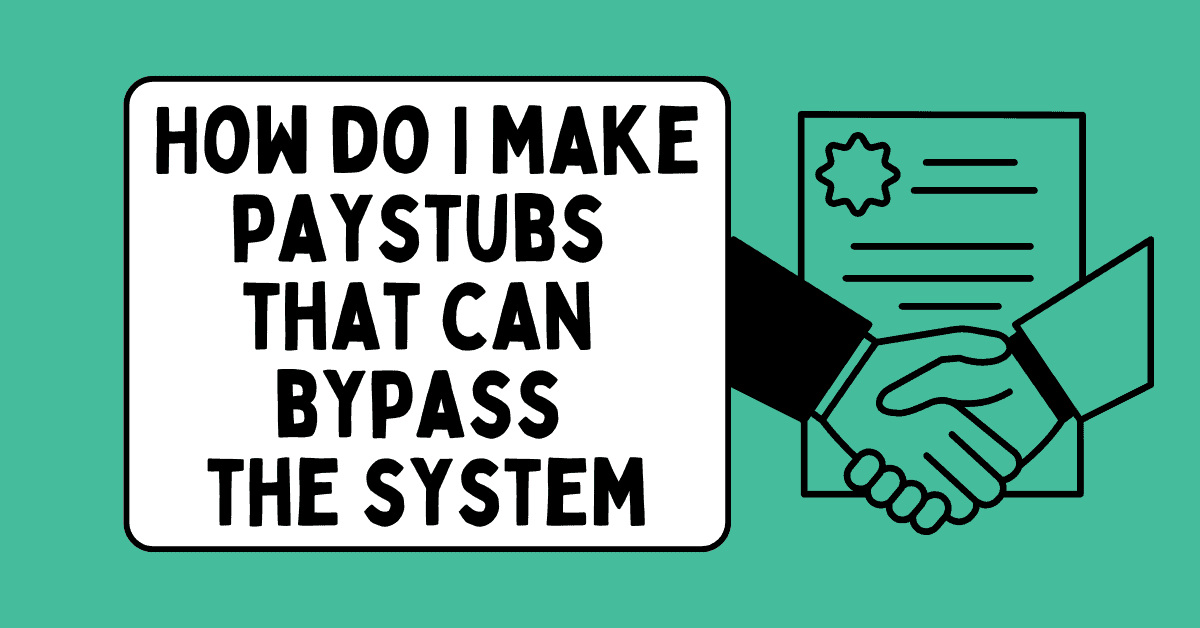
Which pay-stub edits are allowed?
Legitimate pay stubs are generated by your employer’s payroll system or by a professional generator that uses accurate payroll data. Editing is permitted to improve formatting, legibility, or privacy. The key rule: never change earnings, dates, employer information, or tax deductions.
The goal is clarity without altering substance. The following examples show edits that help documents pass verification while preserving truth.
Redaction for privacy and safety
You may redact sensitive data such as full Social Security numbers, employee ID numbers, or parts of your home address. For example, a renter might black out a bank account number before emailing pay stubs to a landlord. Redaction protects against identity theft without altering factual content.
Practical tips: Use solid black boxes rather than blur tools; ensure the redaction covers metadata in the PDF; and keep an unredacted copy stored securely in case a verifier requests it.
Formatting for readability and file compatibility
Pay stubs come in various formats—PDF, JPEG, paper, and e-pay statements. Sometimes you need to consolidate pages into a single PDF, rotate a document, or adjust margins so that all information is visible. These edits improve readability but do not change the numbers. For instance:
- Combining multiple pages – Merge several stub pages into one PDF for easy uploading.
- Converting file types – Save a JPEG pay stub as PDF to meet an online portal’s requirements.
- Highlighting relevant sections – Use annotations or highlights to draw attention to gross pay, deductions, or year-to-date totals.
- Correcting typos – If payroll misspelled your name, request a corrected stub or mark the correct spelling while clearly indicating the correction.
Mini-scenario: Your employer’s portal exports stubs sideways. You may rotate and re-save as a single PDF with page numbers. You may not change the net pay to “clean up” a rounding error—ask payroll to reissue instead.
Context notes and supplemental documentation
Adding explanatory notes is allowed when done transparently. Self-employed applicants often attach spreadsheets, invoices, or a year-to-date profit-and-loss statement to help lenders understand fluctuating income. Contractors may supply a copy of their 1099, T4, or NOA alongside pay stubs. These additions provide context rather than misrepresenting the numbers.
In short, permissible edits improve clarity and privacy but do not affect underlying income amounts or employment status. If you need more substantial changes—such as updating your address on every stub—ask your employer to reissue the stubs rather than editing them yourself.
What pay-stub changes are illegal and fraudulent?
Fraudulent edits alter or fabricate information to mislead a verifier. Modern systems compare pay stubs against employer databases, payroll tax filings, and bank deposits. Any discrepancy can trigger denial, reporting to authorities, and legal consequences.
If an edit changes the economic reality—amounts, dates, employer identity, or status—it is not formatting. It is fraud. The examples below commonly fail verification and often result in sanctions.
Altering amounts, dates or employer information
Changing gross pay, net pay, tax withholding, or pay-period dates is illegal. For example, adding extra hours to boost income so you qualify for a larger apartment is fraud. Similarly, replacing an employer’s name with a more prestigious company to appear more creditworthy constitutes a false representation under the UK’s Fraud Act and Canada’s forgery provisions.
Why this fails: Underwriters reconcile stubs with employer EINs, payroll frequency, and bank deposit patterns. A single out-of-sequence date or mismatched employer name flags the file for review and potential referral.
Generating fake pay stubs
Some websites offer “authentic-looking” pay stubs for a fee. The FTC has sued operators of such services, alleging they sold fake pay stubs, bank statements, and tax forms used for identity theft and fraud. Using these documents to secure housing or a loan is a criminal offence.
Even if a template looks realistic, it does not link to real payroll records and will fail verification. Algorithms check net-to-gross ratios, tax tables, and pay frequencies against expected patterns.
Misrepresenting employment status
Stating that you are full-time when you are part-time, or claiming to be employed when you are self-employed, is a material misstatement. The FBI notes that mortgage fraud often involves misrepresentation or omission relied upon by lenders. If discovered, a lender can deny the application, call the loan due, or refer the case to prosecutors.
Example: Listing a contract role as “permanent” to boost stability. Verifiers contact HR, check employment databases, and compare pay cadence with claims. The mismatch exposes the misrepresentation.
Using someone else’s pay stubs
Borrowing a friend’s pay stubs or editing a relative’s name is identity fraud. Canadian law makes it an offence to forge a document intending it to be used as genuine. The penalties include imprisonment and a criminal record. In the US, identity theft may lead to federal charges for aggravated identity theft and wire fraud.
Attempting any of these illegal edits not only risks legal sanctions but can permanently damage creditworthiness. Verification systems cross-check payroll deposit amounts, tax withholdings, and employer EINs. The safest approach is to submit genuine documents and, if needed, work with a professional service to format them properly.
When do you need professional document formatting?
Many people can handle basic redaction and PDF conversion. Yet some scenarios benefit from professional help to meet formatting requirements, comply with regional laws, and present income accurately. If stakes are high, expert packaging reduces errors that cause delays.
Professionals do not “make things pass.” They ensure real information is complete, consistent, and easy for verifiers to evaluate. These common situations often deserve expert support.
Renting an apartment or home
Landlords and property managers often request recent pay stubs to verify your ability to pay rent. In tight markets, they may use automated screening that flags mismatched fonts or suspicious rounding. A professional service can present your stubs cleanly and combine them with bank statements, W-2s, or 1099s.
Our related article on editing bank statements for apartment applications explains that you should only make transparency-first changes to protect privacy and never alter underlying numbers.
Auto loans, personal loans and credit cards
Lenders use income documents to determine eligibility and set interest rates. Disorganized or blurry stubs can delay approval. Professionals reorder pages, add clear labels (e.g., “Pay stub + YTD P&L for gig worker”), and ensure consistency between pay stubs and bank deposits.
If your income includes variable overtime, bonuses, or tips, a short cover note and a 12-month average worksheet can help an underwriter understand stability without guessing.
Small business and SBA loan applications
Applicants for Small Business Administration (SBA) loans must provide payroll documentation showing how the business pays employees. Incomplete or poorly formatted stubs can prompt requests for more information, slowing funding. A professional service can prepare a packet that includes payroll summaries, IRS Form 941 filings, and proof of consistent pay cycles.
For owner-operators, adding a simple reconciliation—payroll register totals vs. business bank outflows—helps reviewers validate cash movement at a glance.
Self-employed and gig-worker proof of income
Freelancers, contractors, and gig workers often lack traditional pay stubs. They rely on invoices, bank statements, and annual forms like the 1099, T4 (Canada), or NOA. A professional can compile these into a cohesive package that lenders understand.
For example, a monthly spreadsheet with invoice dates, amounts, and deposits—paired with the CRA or IRS notice showing taxes paid—adds credibility and speeds decisions.
How does our pay-stub formatting service work?
FinancialDocsProvider.com offers a confidential, secure service for formatting and presenting your existing pay stubs and supporting documents. We never fabricate or alter numbers. Our process helps renters, borrowers, and self-employed clients present clear, compliant documentation.
From intake to delivery, each step focuses on accuracy, privacy, and reviewer-friendly packaging. Here’s how it works.
1. Secure intake and verification
You submit your existing pay stubs and any supporting documents through our encrypted portal. We verify that the stubs are genuine and check that earnings align with any bank deposits or tax forms you provide. If discrepancies arise, we alert you rather than attempting to “fix” them.
Security posture: Files are handled under strict access controls. We encourage removing unnecessary identifiers or authorizing us to apply privacy redactions before sharing.
2. Reconciliation and analysis
Our team reviews your documents to identify which fields require redaction (e.g., employee ID, full account numbers) and which require clarification. For self-employed clients, we may ask for additional records like invoices or a profit-and-loss statement. We ensure there is a clear narrative across all documents.
Where appropriate, we draft brief notes that explain pay frequency, seasonal fluctuations, or bonus structures so underwriters can assess stability quickly.
3. Formatting and compilation
We apply professional formatting: adjusting margins, converting files to PDF, adding page numbers, and creating tables of contents for multi-document packets. Notes or annotations highlight key figures. We never change actual pay amounts or dates. For Canadian or UK clients, we ensure formats align with local conventions (e.g., payslip vs. pay stub, currency symbols).
We also standardize filenames and embed accessible text layers so verifiers can search within PDFs without re-keying data.
4. Delivery and support
Within 24 hours, we return your formatted documents via secure download. We provide guidance on how to submit them to landlords, lenders, or government agencies. If additional tweaks are needed, we include one round of revisions.
Our customer support is available via chat or phone for follow-up questions. For details about our services and pricing, see our proof of income editing page and pricing page. We also offer educational resources, such as guides on editing bank statements for apartment applications and getting a verified bank statement copy instantly.
Compliance checklist & document packaging tips
Use this step-by-step checklist to prepare pay stubs that pass verification without risking fraud. Follow the sequence, and document every decision to answer underwriter questions fast.
If any step reveals a discrepancy, pause and request corrected documents from your employer or payroll provider before proceeding.
- Collect original documents. Gather your most recent pay stubs, bank statements, and any tax forms (W-2, 1099, T4, NOA).
- Review for accuracy. Confirm that amounts, dates, and employer information match bank deposits and employment records. If there’s a discrepancy, ask your employer for a corrected stub instead of editing it yourself.
- Redact sensitive data. Black out portions of account numbers, Social Security numbers, or personal addresses to protect your identity.
- Combine and convert. Merge multiple stubs into a single PDF; convert images to PDFs if required by the recipient. Use descriptive file names like “2025-01-15_PayStub.pdf.”
- Add context for non-traditional income. Attach invoices, profit-and-loss statements, or a letter of explanation if you are self-employed or have fluctuating income.
- Check formatting. Ensure consistent fonts, spacing, and alignment. Remove stray marks or cropping issues that might raise suspicion.
- Create a cover sheet. Write a brief summary listing the documents included and key points (e.g., monthly gross pay, average deposits).
- Keep copies. Save a copy of every document you submit in case you need to provide it again or respond to follow-up questions.
- Consult professionals. If you’re unsure about any step, contact a compliance-focused service like ours. We can review your documents and make sure they meet verification standards.
- Validate math. Re-add earnings, taxes, and deductions to ensure totals and YTD figures reconcile across stubs and deposits.
- Test your files. Open the final PDFs on a phone and computer, and upload a sample to the target portal to confirm readability and size limits.
- Document your timeline. Keep a short log of pay dates, deposit dates, and any payroll corrections in case a reviewer asks for background.
Following these steps helps ensure your application goes smoothly and reduces the likelihood of rejection or investigation.
What red flags do verification systems look for?
Automated screening tools and human underwriters scan pay stubs for indicators of fraud. Knowing these red flags helps you avoid avoidable mistakes. If you spot one in your packet, correct it at the source before submission.
Pay stubs that pass verification typically show consistent formatting, sensible math, and deposits that match net pay. Use the list below as a final pre-flight check.
- Inconsistent fonts or alignment. Mixing typefaces or misaligned columns suggests manual editing.
- Round numbers. Legitimate payroll usually has cents; whole numbers each period can signal fabrication.
- Missing employer details. Lack of an employer address, tax identification number, or company logo raises doubts.
- Unrealistic pay frequency. Weekly pay on a salaried role that normally pays bi-weekly or monthly invites questions.
- Mismatch with bank deposits. Underwriters cross-verify deposits. Large discrepancies between stubs and deposits are flagged.
- Errors in dates. Overlapping pay periods or out-of-order dates suggest a doctored file.
- Lack of deductions. True stubs show taxes, benefits, and other deductions. Net equal to gross is suspicious.
- EIN and employer-name mismatches. The name on the stub should map to the EIN and payroll provider records.
- Improbable withholdings. Tax and benefit deductions that don’t track expected tables or local rules draw review.
- Metadata anomalies. PDFs with unusual producer strings or recent edits on “older” pay periods may be questioned.
Avoid these issues and rely only on genuine documentation. When in doubt, ask your employer for a corrected stub or consult a professional before you submit.
Where can I find official guidelines & resources?
Use trusted sources when researching authenticity and fraud prevention. The sites below provide current guidance and enforcement actions. They help you understand what regulators and reviewers expect in different jurisdictions.
Bookmark them and reference specific pages in your cover sheet if relevant—for example, when explaining why you redacted a bank account number or included a CRA notice.
- U.S. Federal Trade Commission (FTC) – Consumer protection news and enforcement actions against fake document sellers.
- U.S. Department of Justice – Information on fraud prosecutions and penalties for making false statements.
- UK Fraud Act 2006 guidance – Overview of fraud by false representation, failure to disclose information, and abuse of position.
- Canada Criminal Code – Forgery & offences – Official text of sections 366–367 describing forgery and its penalties.
- Consumer Financial Protection Bureau (CFPB) – Guidance on consumer credit and income verification.
- How to Edit Bank Statements for Apartment Applications – Our detailed guide on lawful edits for rental applications.
- No Bank Statement? How to Get a Verified Copy Instantly – Tips for obtaining official copies when you’ve lost your original statement.
These resources keep you aligned with legal requirements and best practices across jurisdictions. For more about our mission and values, visit our About us page.
Frequently asked questions
This section answers common questions in a concise, scannable format. When rules differ by jurisdiction, follow the stricter standard and consult the official sources in the section above.
Remember: formatting for clarity is allowed; altering facts is not. If something looks wrong on a stub, ask payroll to reissue it.
Are pay-stub generators legal?
Yes, reputable pay-stub generators are legal when they use accurate payroll data supplied by your employer or yourself. They simplify the calculation of gross pay, deductions, and net pay. However, using a generator to fabricate income or employment details is illegal and may constitute fraud.
Can I edit my pay stub to fix an error?
If your employer made a mistake, request a corrected pay stub from payroll. Minor formatting edits like redacting personal data or adding annotations are acceptable. Do not alter any numbers, dates, or employer details yourself.
What happens if I use a fake pay stub for a loan or rental application?
Using a fake pay stub to secure credit or housing is a criminal offence. In the US, it may violate federal statutes on bank fraud and false statements; penalties can include fines and imprisonment. In Canada, forgery carries a potential ten-year prison sentence. Beyond legal consequences, your application will likely be denied and your reputation harmed.
Are there alternatives to pay stubs for proving income?
Yes. Landlords and lenders often accept bank statements, tax returns, proof-of-income letters, employment contracts, or Notices of Assessment (NOA) from tax authorities. Self-employed individuals can supply invoices, contracts, and year-to-date profit-and-loss statements.
How far back do landlords and lenders look?
Most landlords request one to three months of pay stubs; lenders may ask for two years of tax returns or year-end forms such as W-2s or T4s. Always check the specific requirements for your application and provide the most recent documents available.
Need accurate, reliable financial documents fast? Contact FinancialDocsProvider.com now.
Author: Jane Doe is a compliance-first financial document editor with over 10 years of experience helping renters, loan applicants, and self-employed professionals present accurate proof of income. She specialises in formatting pay stubs, bank statements, and tax forms in line with US, UK, and Canadian regulations. Learn more on our About us page.

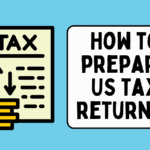

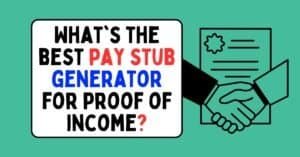

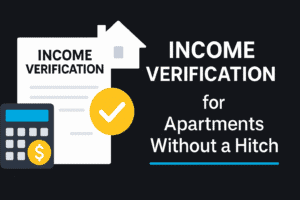
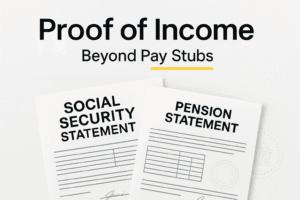
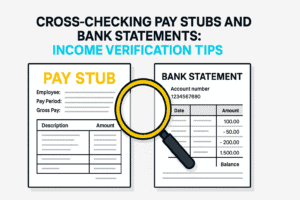
Add comment